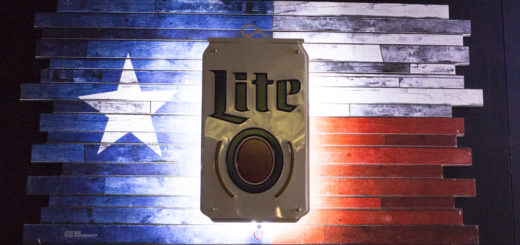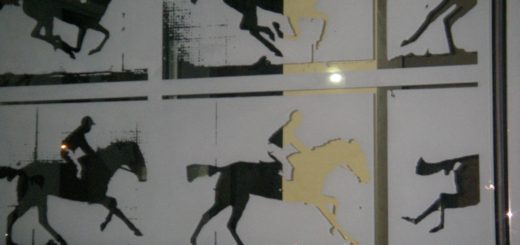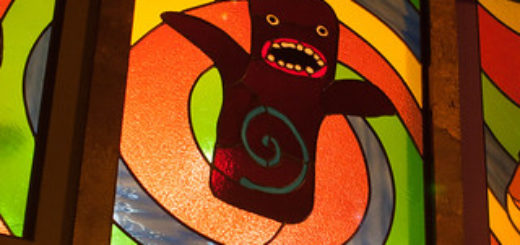SCREAM, QUEEN! MY NIGHTMARE ON ELM STREET @Nashville Film Festival
Nashville Film Festival Coverage via Jason Spark, Our Man in Nashville
Before watching Scream, Queen! My Nightmare On Elm Street, it’s best to have seen the movie about which this doc was made, specifically A Nightmare On Elm Street 2: Freddy’s Revenge. I, full disclosure, have not seen it; although I have aspirations towards film criticism, the appeal horror movies hold for their rabid fans has always been lost on me. A friend once questioned me about this—how could I have no use for horror movies, when I am a sucker for any gangster film? She had a point; Freddy Kreuger has never really occupied the dreams of teenagers and proceeded to kill them. Jimmy “The Gent” Conway, on the other hand, was based on a real person, and who really did oversee the Lufthansa heist and he really did kill his colleagues. A fictional murderer, I have no use for, but a very real murderer? Cinematic gold, in my opinion (and the opinions of quite a few others).
That said, Scream gives enough exposition and footage from the original film that you can “catch up,” so to speak, if you haven’t seen it: in Part 2, the celebrated Mr. K resumes possessing the denizens of Elm Street, choosing this time to focus on one person—a teenage boy, whose body becomes literally occupied by Kreuger. The film’s “money shots,” as it were, include Freddy seeming to burst out of the boy’s chest, his eye and scarred face emerging from the boy’s throat and Coach Schneider stripped naked, chained to a wall, and whipped with wet towels (but, y’know, scary wet towels.)
Here’s the thing: after the film’s release, and after its countless viewings and re-viewings on home video, audiences began to see something in the film that may or may not have been intended. That “something”, for lack of a word, is a gay subtext, and not necessarily a positive one; Freddy is often read as a metaphor for latent homosexuality (hence his “lurking within” the boy, etc.) It also doesn’t help that when the hapless teen screams, he sounds…like this. Also frequently cited is this moment, which I think speaks for itself.
A bit of historical context is in order. This is a horror film believed to have a gay subtext that was released in the 1980s—during, in other words, the initial panic over AIDS. Because this appeared to be, and may have been (we’ll come back to that) a gay horror movie, there was concern that the lead actor, Mark Patton, may have actually been gay—he was and is, as a matter of fact—and that concern (this was, culturally, long ago) essentially shipwrecked Patton’s burgeoning career. That’s what drives this film; that’s why the subtitle begins “My Nightmare.” The nightmare has been Mark’s, for about 30 years.
The film has a lot of information to dispense, and does so thoroughly; we learn that Mark was an up-and-comer in showbiz, encouraged to go to Hollywood after appearing on Broadway and then in the film version of Come Back to the Five & Dime, Jimmy Dean, Jimmy Dean with Cher. He gets commercials, he gets an unaired sitcom pilot, he gets Nightmare—and that’s that, because no one will work with an actor who “seems” gay (yes, I know; again, this was, culturally, long ago.) He disappears utterly from the radar. We learn that the directors have to literally find Patton; he is in Mexico, running an art boutique, in a long-term relationship with a partner. He has had and survived HIV, and still struggles with tuberculosis. He is reluctant to revisit Elm Street in any fashion.
Patton is, ultimately, coaxed into it, because the culture has changed, and it has a new element: the horror con. We see Patton on tour, basically, appearing at horror cons with the rest of the cast. It’s interesting to see Robert Englund, the steel-fingernailed gent himself, relegated to the part of an elder statesman; it’s frustrating to see Clu Galager, a longtime veteran of Hollywood, reduced to a few seconds of onscreen time. What’s rewarding, however, is the warm reception Patton receives at con after con, especially from LGBTQ fans of the movie, many of whom express the same sentiment: maybe this was a gay character, maybe this was even a gay actor, but they didn’t recoil in horror—they were relieved to finally see such a character onscreen, as something other than the fey hairdressers and all the rest.
Less rewarding, however, is a scene in which Patton finally attempts to get the closure he most critically needs about the film, by speaking directly to one David Chaskin. Chaskin was the screenwriter on Nightmare. When articles and blog posts began to appear about the movie’s possible subtext, Chaskin denied it at first. Then he said this:
Homophobia was skyrocketing and I began to think about our core audience—adolescent boys—and how all of this stuff might be trickling down into their psyches… My thought was that tapping into that angst would give an extra edge to the horror.
In other words, while the damage to Patton’s career could be/possibly should be laid at the feet of the culture at the time, David Chaskin’s choice laid it there in the first place. That’s certainly Patton’s take, and has been this whole time; the climax of the film sees Patton and Chaskin finally meeting to discuss the script. Patton sticks to his guns; Chaskin delivers a master class in obfuscation and misdirection. If our current President sees this film, he’ll likely appoint Chaskin to run the National Film Registry.
That said, we get the impression that Patton has finally made peace with his past, and is enjoying his re-structured present—and we are told a very thorough story about the film, and its impact on one actor’s life. I still don’t have a lot of interest in horror movies, but I find myself curious about this one, knowing as I now do that this horror film, at least, has a meaning beyond the blood and gore.






















